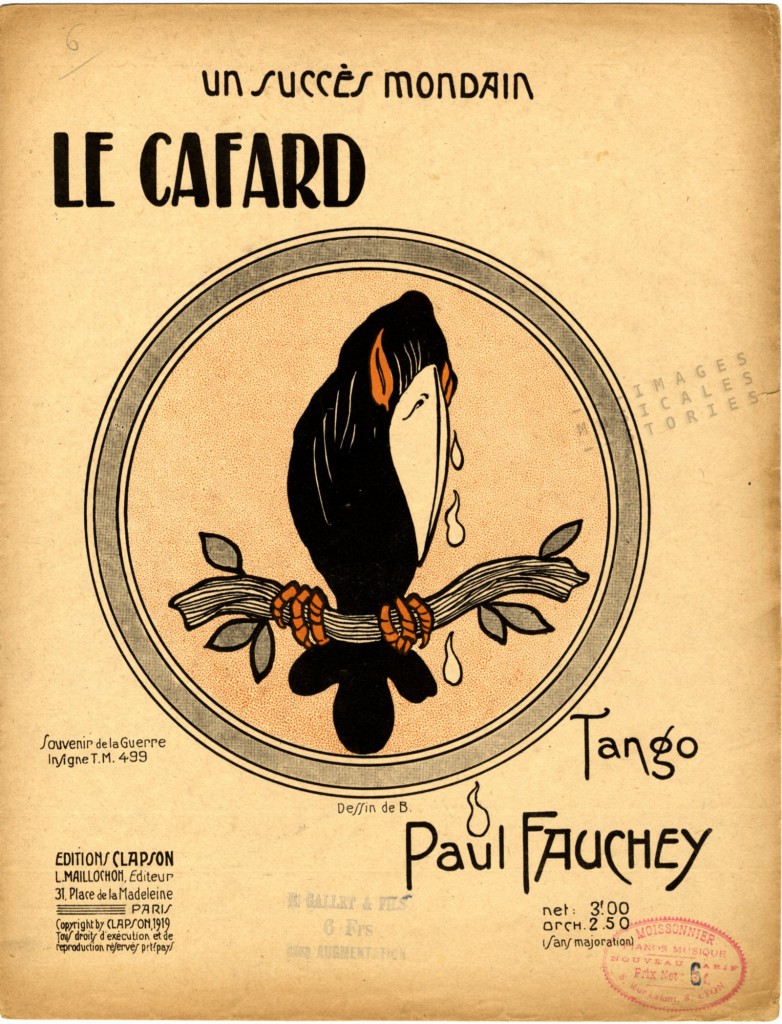
We recently found the historical explanation for an unusual series of sheet music covers that we have been collecting for years.
At the outbreak of the First World War the French army requisitioned private cars, commercial vans and trucks, taxis and all Parisian buses and their drivers. The military Service Automobile started with only a few dozen cars in 1914, and counted almost one hundred thousand (!) vehicles at the time of the armistice. It transported soldiers and provided the army with food and munitions. The Service Automobile was divided in sections, each with a specific task. The more than thousand Parisian buses of the RVF (Ravitaillement en Viande Fraiche) carried fresh meat to the war zone. The seats were taken out of the buses and meat racks were installed. The windows were replaced by canvasses. There was no refrigeration. A single bus could contain the meat for a whole regiment of about three thousand men.
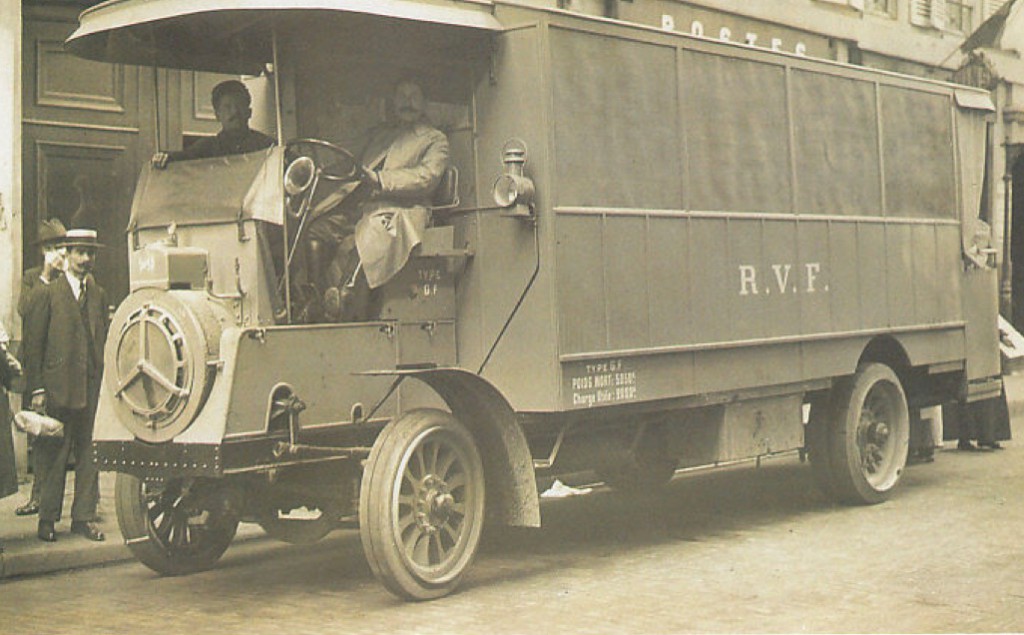
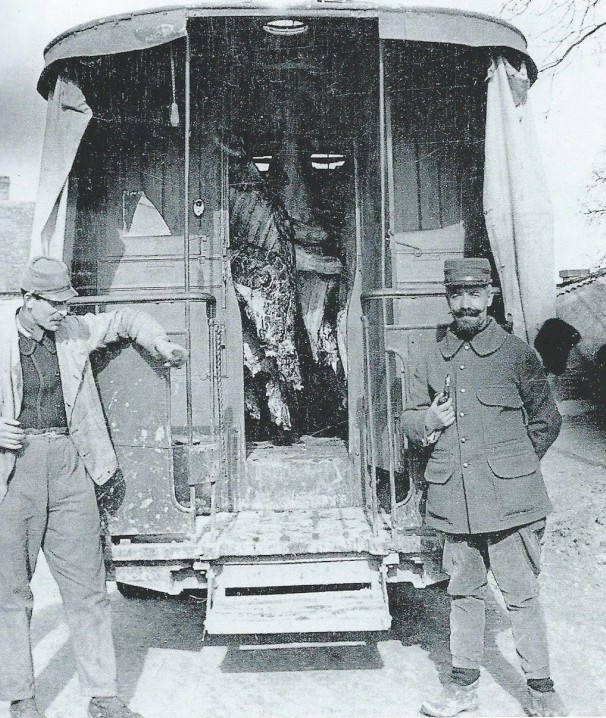
Other sections were charged with the transport of the wounded (the Sanitary Sections or SS), ammunition for the artillery (SMA), material (TM), or staff (TP). Every section was identified by it’s initials and a number, for example TM 670. Because this wasn’t easy to communicate, one soon began to use nicknames to indicate certain sections. For example ‘the lady bug’ or ‘the polar bear’. And in 1916, although against regulations, the sections began to paint their symbol in vivid colours on their trucks in order to be easily recognised. The inspiration for these nicknames and insignia was limitless: animals, soldiers, nurses, playing cards, geometric shapes, daily life, …
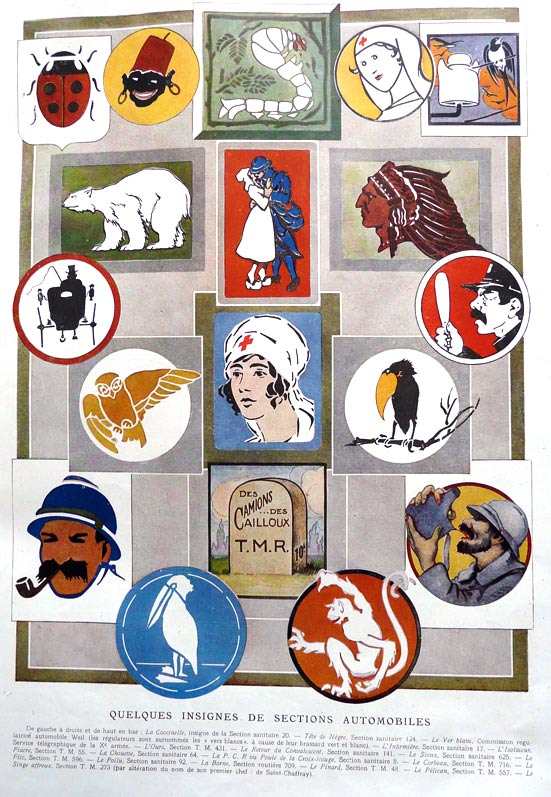
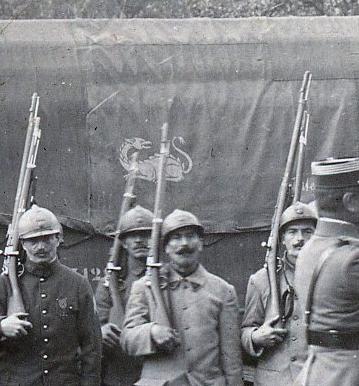
Shortly after the war, 155 of these insignia were exhibited in Paris in honour of the Service Automobile and sold for charity. At the same time the Parisian composer and publisher Clapson edited a series of musical compositions (at least 35) on cheap post-war paper in remembrance of the Service Automobile. Each cover was illustrated with the emblem of one of the famous sections. The music was performed in the renowned Parisian venues such as the Casino de Paris, l’Olympia or Les Folies Bergère.
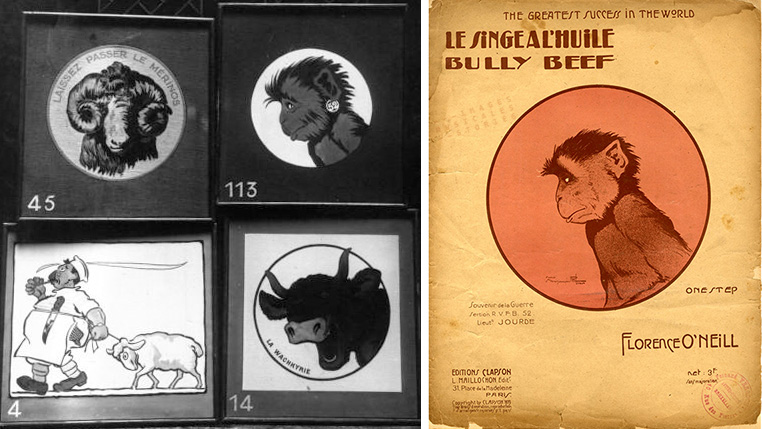
Two symbols in the press photo above, the ape and the cow, were drawn by Benjamin Rabier and were later used by Clapson to illustrate his sheet music. The head of the ape (the insignia of the section RVF B20) adorned the cover for the music of Le Singe à l’huile or Bully Beef. Tinned corned beef or bully beef was – and still sometimes is – translated in French as singe (singe being the French word for ape). This must have been a joke as the RVF only transported fresh meat. In a following post we will discuss the insignia of the laughing cow’s head, nicknamed la Wachkyrie.
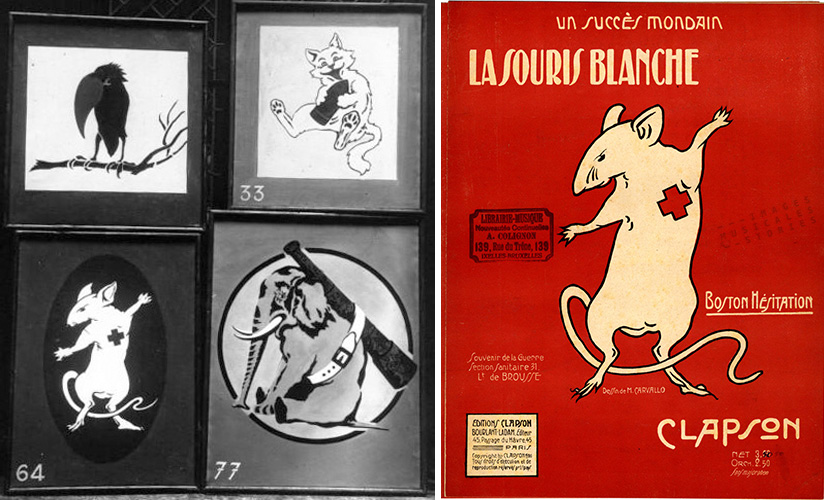
The red cross on the cover of La Souris Blanche leaves no doubt that this white mouse was the insignia for one of the sanitary sections.
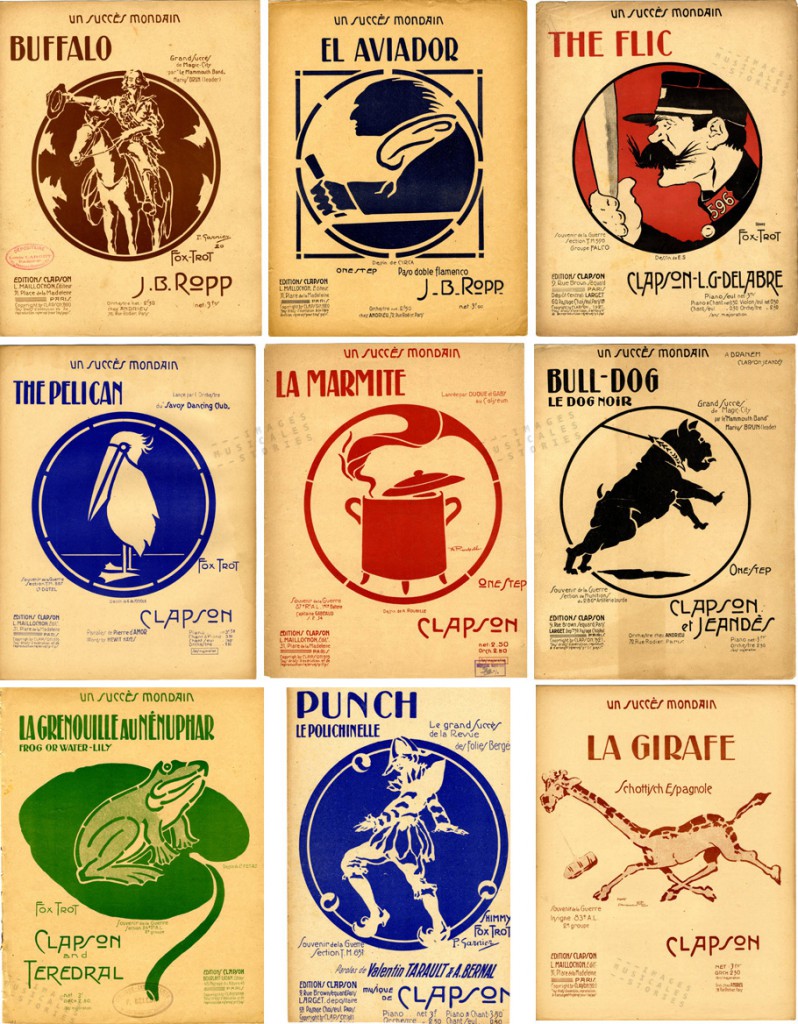
On the left side of the second row in the above collage of Clapson’s songs is The Pelican. The cover was drawn by the Fench painter Guirand de Scévola. He is considered one of the inventors of military camouflage during World War I. The Pelican, a foxtrot composed by Clapson, was the biggest hit of the series. You can listen to this popular tune now, as if you were celebrating the end of The Great War at a thé dansant in the Savoy Dancing Club yourself.

Mais où allez vous chercher tout ça? Vous devez passer vos nuits à visiter vos tiroirs ?….Surtout, continuez comme ça, ……!!!!